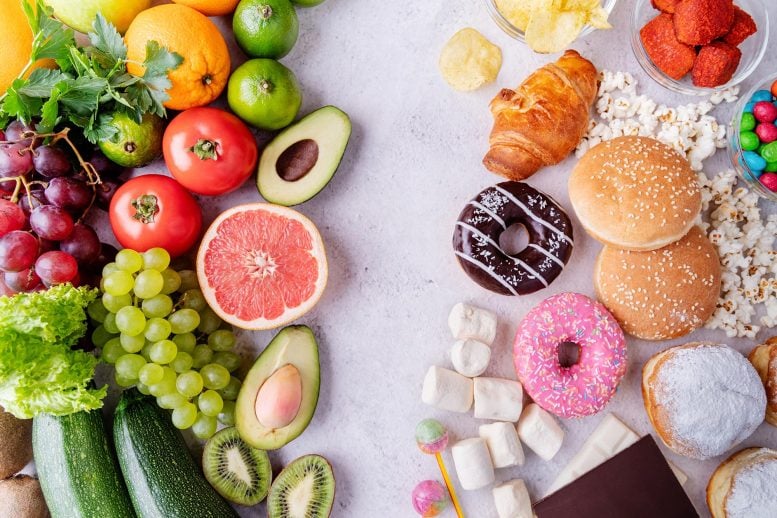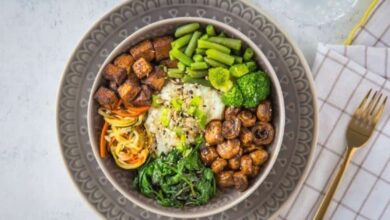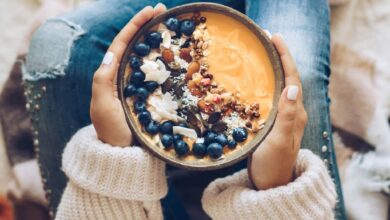
Natural Sugar and Added Sugar Explained: What You Need to Know
Natural sugar and added sugar explained: it’s a topic that often gets confusing. We all know sugar is sweet, but what’s the difference between the sugar found naturally in fruits and the sugar added to processed foods? This is where things get interesting.
It’s not as simple as good vs. bad, but understanding the distinctions between these two types of sugar is key to making informed choices about our diet and overall health.
This article will break down the basics of sugar, explore the benefits of natural sugars, and delve into the potential downsides of excessive added sugar intake. We’ll also uncover some hidden sources of added sugars and provide practical tips for making healthier choices.
Added Sugars: Natural Sugar And Added Sugar Explained

While natural sugars found in fruits and vegetables are essential for our health, added sugars are a different story. These sugars are added to foods and beverages during processing and preparation, and they don’t provide any nutritional value. Excessive consumption of added sugars can have serious consequences for our health.
Health Risks Associated with Excessive Added Sugar Consumption, Natural sugar and added sugar explained
Excessive consumption of added sugars can contribute to various health problems. The World Health Organization (WHO) recommends limiting added sugar intake to less than 10% of total daily calories.
Impact of Added Sugars on Weight Gain, Diabetes, and Heart Disease
- Weight Gain:Added sugars are calorie-dense and contribute to weight gain. When we consume excess calories, our bodies store them as fat, leading to obesity.
- Diabetes:High added sugar intake can increase the risk of developing type 2 diabetes. This is because excessive sugar consumption can lead to insulin resistance, making it difficult for the body to regulate blood sugar levels.
- Heart Disease:Added sugars can raise triglyceride levels and lower good cholesterol (HDL), increasing the risk of heart disease. High sugar intake can also lead to inflammation, contributing to the development of cardiovascular problems.
Hidden Sources of Added Sugars in Processed Foods and Beverages
Added sugars are often hidden in processed foods and beverages, making it difficult to track our intake. Some common sources include:
- Sugary Drinks:Soft drinks, fruit juices, energy drinks, and sweetened teas are major contributors to added sugar intake.
- Processed Foods:Many processed foods, such as breakfast cereals, baked goods, candy, and sauces, contain significant amounts of added sugars.
- Restaurant Foods:Fast food and restaurant meals often contain high levels of added sugars, especially in sauces, dressings, and desserts.
Tips for Reducing Added Sugar Intake
Here are some practical tips for reducing your intake of added sugars:
- Read Food Labels:Pay close attention to the ingredient list and the amount of sugar per serving. Look for products with less sugar and choose whole, unprocessed foods whenever possible.
- Limit Sugary Drinks:Replace sugary drinks with water, unsweetened tea, or sparkling water.
- Cook More Meals at Home:This allows you to control the ingredients and reduce the amount of added sugar in your meals.
- Choose Whole Fruits and Vegetables:These provide natural sugars along with essential vitamins, minerals, and fiber.
- Be Mindful of Portion Sizes:Even healthy foods can contribute to excessive sugar intake if consumed in large quantities.
Wrap-Up
In conclusion, understanding the difference between natural and added sugars is essential for making informed choices about our diet. While natural sugars in whole foods offer valuable nutrients and energy, excessive added sugar consumption can have detrimental effects on our health.
By embracing a balanced diet, focusing on whole foods, and being mindful of added sugar intake, we can enjoy the sweetness of life while prioritizing our well-being.
Understanding the difference between natural sugars found in fruits and vegetables and added sugars in processed foods is crucial for making healthy choices. For a delicious and nutritious meal that’s low in added sugars, try this 250 calorie chicken cauliflower fried rice recipe.
This recipe is packed with flavor and protein, making it a great option for a satisfying and healthy dinner. By choosing foods rich in natural sugars and limiting added sugars, you can enjoy a balanced diet and feel your best.
It’s important to understand the difference between natural sugars found in fruits like bananas and added sugars often lurking in processed foods. A delicious way to enjoy natural sugars is through these banana oat greek yogurt pancakes , where the sweetness comes from ripe bananas and a touch of maple syrup.
By choosing recipes like this, you can satisfy your sweet tooth while making mindful choices about your sugar intake.
Understanding the difference between natural sugar and added sugar is crucial for a healthy diet. While natural sugar, found in fruits and vegetables, provides valuable nutrients, added sugar, often lurking in processed foods, contributes to empty calories and can lead to health problems.
It’s essential to be mindful of your sugar intake, and a good starting point is to ensure you’re getting enough of the 4 essential nutrients you’re probably missing. A balanced diet rich in these nutrients can help you make healthier choices, including limiting your intake of added sugar and prioritizing natural sources of sweetness.






